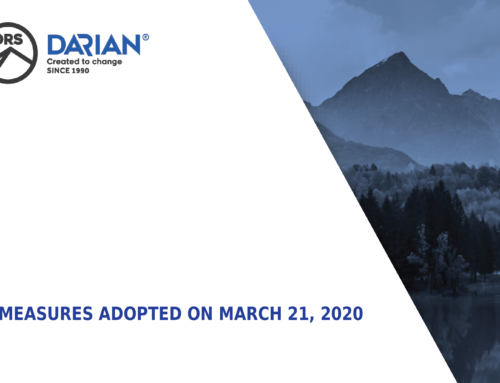At the moment of incorporation of a certified natural person, an individual undertaking or a family undertaking, you have to opt for taxation in the actual income system or based on the income standard, at the moment of carrying out the independent activities. The difference, namely the advantages and disadvantages are presented next.
Legal provisions
In the case of the annual net income determined in the actual income system, the Tax Code mentions in art. 68 the fact that it is determined as „the difference between the gross income and the deductible expenses made for achievement of the income”, on the basis of the data from the simple entry accounting system.
Thus, according to art. 68, para. (2), the gross income includes the following:
„a) amounts collected and the equivalent in RON of the in-kind income from carrying out the activity;
b) income in the form of interest from trade receivables or from other receivables used in connection with an independent activity;
c) gains from the transfer of assets from the business patrimony used within an independent activity, including the counter-value of assets that remain after the final termination of the activity;
d) income from the commitment not to carry out an independent activity or not to compete with another person;
e) income from the cancellation or exemption of certain payment obligations incurred in connection with an independent activity;
f) income registered by electronic cash register with tax memory, installed as taxation machines on people or goods transport vehicles under taxi regime.”
In case of expenditures, according to art. 68 para. (4), it has to fulfil certain criteria such as to to be carried out within the independent activities (justified by documents), to be included in the expenditures of the current tax year in which they were paid, to represent salary expenditures and related to salaries, as well as mandatory professional contributions and others.
In the case of the annual net income determined based on the income standard, the Ministry of Finance develops the classification of the activities for which the net income can be determined based on the income standard. However, the income standard cannot be smaller than the gross minimum wage, in force at the moment of its establishment multiplied by 12.
According to art. 69, para. (5) from the Tax Code, „in the case of taxpayers that carry out an independent activity, that generates income from independent activities, other that income from liberal professions, and from intellectual property right, defined in art. 67, on periods smaller that the calendar year, the related income standard of that activity shall be corrected in such a way that it reflects the periods of the calendar year in which the respective activity was carried out”.
If a natural certified person carries out two or more independent activities from which they gain income (with the exception of the liberal professions and intellectual property rights), the net income shall be determined by the cumulation of the level of the income standards for each activity.
According to para. (7), art. 69 from the Tax Code, „If a taxpayer performs an activity included in the classification referred to in para. (2) and another independent activity, the annual net income is determined on the basis of accounting in the actual income system, based on the accounting date, according to the provisions of art. 68”.
Also, if the taxpayers for which the net income is determined based on the income standards registered in the previous tax year a gross income higher that the equivalent in RON of the amount of EUR 100,000, they have the obligation to the determine the annual net income in the actual income system starting with the following tax year.
Practical aspects
The main difference between the two methods of determining the net income is given by the way of calculating the net income for which the tax and afferent contributions are paid (income tax, social insurance fund and health insurance fund).
Next we will briefly present the advantages and disadvantages of the two methods of determining the annual net income:
| Advantages | Disadvantages | |
| The actual income system | The basis for the calculation is determined as the difference between the gross income and the deductible expenditures (with the exception of sponsorship, patronage, for granting private scholarships and protocol expenditures) | Filling out and submitting the tax statement (D220 “Statement regarding the estimated income/income standard” and D200 “Statement regarding the income obtained in Romania”) |
| Accounting records are mandatory | ||
| Income rate | The income standard is established by the Ministry of Public Finances by a classification list | The income standard is not applicable to all the NACE codes |
| There are no income standards for independent natural persons | ||
| Filling out and submitting the D220 Statement regarding the estimated income/income standard | When establishing of the annual income standards, the income limit determined by multiplying by 12 the minimum gross wage represents the annual income before applying the criteria. The criteria for establishing the income standard by the general regional directorate of the public finance are the ones provided in the methodological rules. | |
| Accounting records are not mandatory | If the taxpayers for which the net income is determined based on the income standards registered, in the previous tax year, a gross income higher that the equivalent in RON of the amount of EUR 100,000, they have the obligation to the determine the annual net income in the actual income system starting with the following tax year. |
The obligations of the taxpayers that chose taxation in the actual income system, imply the submission of the tax statements within the term provided by the law and filling out the tax record registry, in order to establish the annual net income.
The obligations of the taxpayers that opt for taxation based on the income standard are to fill out only the income part in the tax record registry.
In conclusion, depending on the estimated annual income, any taxation method of the independent activities can generate advatages or disadvantages for the taxpayer.
Article published first on Avocatnet.ro.



Suntem soluția eficientă în oferirea de servicii complexe de evaluare și consultanță pentru clienții corporativi. Echipa noastră de specialiști asistă clienții în soluționarea diverselor spețe cu impact fiscal.






